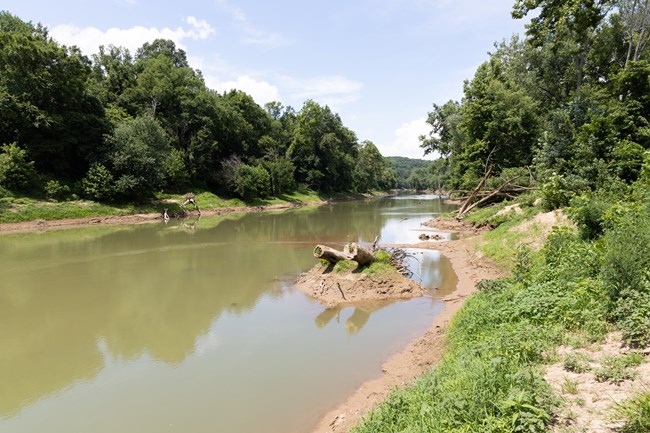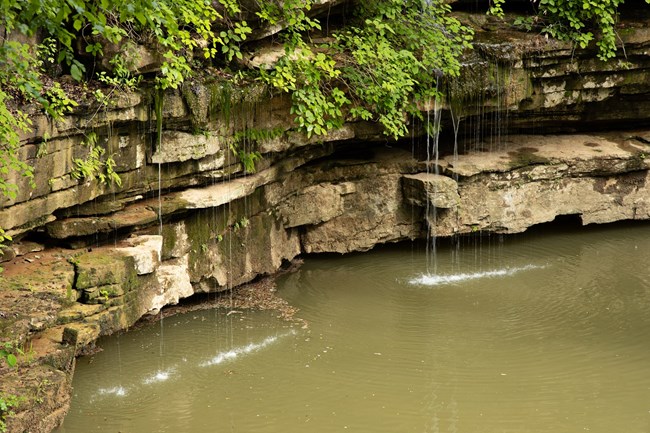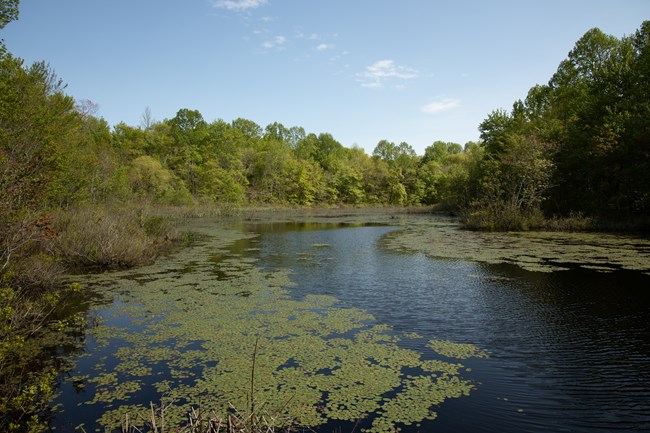|
Rivers, streams, springs and ponds can all be found within the park. These waterways play an important role in connecting the varying ecosystems in the park through a vast hydrological network. At the same time, these varying waterbodies are also a critical habitat to hundreds of species of plants and animals. 
NPS Photo/ Deb Spillman Green and Nolin RiversTraveling over 30 miles through the park, the Green and Nolin Rivers are some of the most biodiverse rivers in North America. Approximately 87 species of fish and 58 species of freshwater mussels call the rivers home. In addition to the freshwater mussels, there are nearly 200 species of bottom-dwelling macroinvertebrates in the rivers. For these biological reasons, the Green River has been designated an "Outstanding Resource Water" by the state of Kentucky. 
NPS Photo/ Deb Spillman Springs and SeepsTypical of karst topography, the park and surrounding area is dotted with sinkholes. As the sinkholes south of the park drain, the surface water flows underground through caves within the Mammoth Cave plateau eventually emerging through springs along the Green River. Groundwater in this area can travel for over 7 miles from the sinkhole plain, passing through many parts of the Mammoth Cave system, as well as smaller caves in the area. The groundwater in the cave is home to eyeless creatures, such as crayfish, cave fish, cave shrimp and many more species of aquatic life. 
NPS Photo/ Deb Spillman Ponds and Upland SwampsDue to the vast karst landscape found throughout the park, water often drains below the surface before large ponds or lakes can form. However, some instances of ponds and upland swamps do exist in the park. Sloans Pond, located along the Mammoth Cave Parkway, is one prime example. |
Last updated: August 11, 2025
